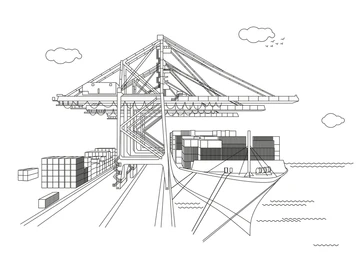Introduction
In 2025, the urban housing market is witnessing a massive transformation driven by shifting lifestyles, economic pressures, and evolving attitudes toward ownership and community. At the forefront of this change is the rapid rise of co-living spaces—a modern housing concept where residents share living areas, services, and amenities in exchange for affordability, flexibility, and community.
Once considered a niche for students or digital nomads, co-living has now entered the mainstream, attracting young professionals, remote workers, entrepreneurs, and even retirees. Real estate developers, investors, and startups are responding with innovative co-living models tailored to a wide demographic.
This blog dives deep into the evolution of co-living in 2025, its appeal, business models, benefits, challenges, and how it is disrupting and redefining the future of urban real estate.
1. What is Co-Living?
Co-living refers to a shared residential arrangement where individuals rent private bedrooms within a larger shared space, often including communal kitchens, lounges, workspaces, and entertainment areas. Unlike traditional rental models, co-living emphasizes community, flexibility, affordability, and convenience.
Key Features of Co-Living:
- Private bedrooms, often with ensuite bathrooms
- Shared kitchens, lounges, and workspaces
- All-inclusive rent covering utilities, WiFi, cleaning, and events
- Access to community events, fitness areas, and networking spaces
- Flexible lease terms, often from weekly to monthly
The appeal of co-living lies in its hybrid model—it blends residential comfort, hotel-style amenities, and community engagement, perfect for the on-the-go, digital-first generation.
2. The Demographic Driving Co-Living Growth
In 2025, co-living is no longer limited to students or early-career professionals. It now appeals to:
- Young professionals seeking affordability and convenience
- Digital nomads who move frequently but desire community
- Start-up founders looking to co-live and co-work
- Millennials & Gen Z who prioritize experiences over ownership
- Single parents or senior citizens seeking social living environments
This demographic shift is fueled by urban loneliness, housing unaffordability, and the rise of remote work, creating a perfect storm for co-living adoption in cities worldwide.
3. Co-Living vs Traditional Rentals: What’s Changing?
Co-living flips the traditional rental model on its head. Here’s how:
| Feature | Traditional Rentals | Co-Living in 2025 |
|---|---|---|
| Lease Terms | 6-12 months (fixed) | Flexible: weekly/monthly |
| Setup Costs | Security + utilities | One all-inclusive rent |
| Amenities | Limited | High-end, shared amenities |
| Social Interaction | Low | High community engagement |
| Maintenance | Renter’s responsibility | Centralized property management |
| Target Audience | Families/Couples | Solo urban professionals |
The co-living model addresses modern pain points: lack of flexibility, high cost of urban rentals, and urban isolation.
4. Business Models of Co-Living Spaces
In 2025, co-living spaces come in various business formats, catering to both budget-conscious renters and luxury seekers.
Popular Co-Living Models:
- Operator-Owned Properties: Co-living companies own and operate their buildings (e.g., Common, The Collective).
- Asset-Light Models: Operators lease properties from landlords and convert them into co-living spaces.
- Developer Partnerships: Real estate developers collaborate with co-living brands to integrate into new builds.
- Franchise-Based Co-Living: Emerging model where individuals can own and run co-living franchises in localities.
These business models offer higher occupancy rates and longer tenancies compared to traditional rentals, making co-living a strong investment avenue.
5. Smart Technology and Design in Co-Living Spaces
In 2025, co-living isn’t just about shared space—it’s about smart, sustainable, and user-centric design powered by technology.
Tech-Driven Features:
- Smart locks, app-based room access
- AI-enabled energy management
- App for booking shared amenities
- IoT for automated maintenance reporting
- Virtual community boards for events and updates
Design Innovations:
- Convertible furniture and space-saving solutions
- Zoned living areas to separate privacy and social life
- Biophilic design to boost mental wellness
- Modular layouts for scalability and customization
Co-living spaces are built to enhance interaction, mental health, and digital integration—all while maximizing square footage in urban spaces.
6. Benefits of Co-Living for Residents
Why are thousands of people switching to co-living in 2025? The reasons are clear:
- Affordability: Shared costs mean lower rents for prime city locations
- Flexibility: No long leases or setup hassles
- Convenience: All-in-one billing, fully furnished, ready-to-move spaces
- Community: Built-in social life, networking, events
- Safety: 24/7 support, monitored access, digital controls
For residents, it’s not just about where they live—it’s about how they live. Co-living is the lifestyle fit for the digital, connected, global citizen.
7. Challenges Facing Co-Living Operators
Despite its advantages, co-living also comes with a unique set of challenges:
- High turnover: Short-term leases mean frequent onboarding/offboarding
- Operational complexity: Managing shared spaces, cleaning, utilities, etc.
- Zoning and legal hurdles: Co-living isn’t always recognized legally in many regions
- Cultural fit: Ensuring compatibility among diverse residents
- Data privacy: With heavy tech use, safeguarding resident data is critical
Smart operators are investing in robust CRM systems, community managers, and legal advisory teams to overcome these barriers.
8. Co-Living as an Investment Opportunity
Investors in 2025 are increasingly eyeing co-living as a profitable and resilient asset class. Despite global downturns or economic uncertainty, housing remains essential—and flexible models like co-living thrive even more during uncertain times.
Why Investors are Flocking In:
- Higher yields due to multiple tenants per unit
- Lower vacancy rates
- Scalable, repeatable business models
- Positive cash flow from bundled services
- Strong appeal to institutional investors and REITs
Even family offices and HNIs are exploring co-living as a long-term real estate play.
9. Government and Regulatory Landscape
Governments are beginning to support co-living as a solution to urban housing shortages, though regulation varies widely.
Key Areas of Focus:
- Fire safety and building codes
- Lease protections for residents
- Health and sanitation regulations
- Taxation of bundled services
Cities like London, Singapore, and New York are creating co-living-friendly zoning and even offering incentives to co-living developers to solve affordable housing crises.
10. The Future of Co-Living: What’s Next?
In 2025 and beyond, the co-living model is evolving further:
- Hybrid Work-Home Models: Co-living + co-working under one roof
- Vertical Villages: 50-100 unit vertical co-living communities in urban hubs
- Themed Co-Living: Fitness-focused, vegan, artist, or entrepreneur-specific spaces
- Decentralized Ownership: Using blockchain for fractional ownership of co-living properties
- Global Co-Living Chains: Like hostels, but for long-term shared living
As cities get denser and lives get busier, co-living will move from alternative to mainstream housing model across the globe.
Conclusion
Co-living in 2025 is no longer just a housing trend—it’s a movement that combines flexibility, affordability, technology, and human connection. For urban dwellers, it solves real-life challenges in innovative ways. For real estate professionals, it opens new paths for investment, development, and growth.
As the real estate industry continues to evolve, co-living will play a pivotal role in how cities house, connect, and empower their residents in the years ahead.
























Join The Discussion